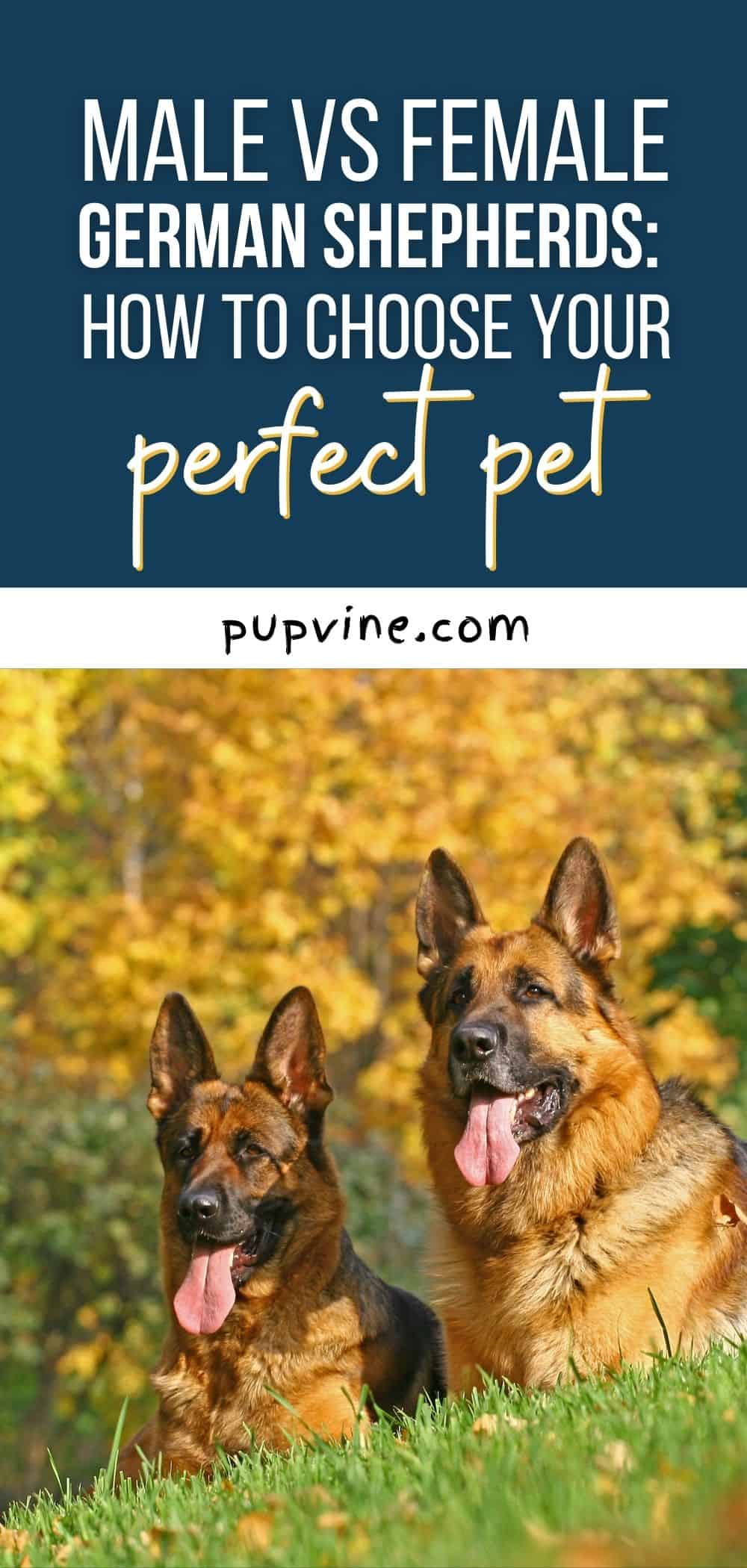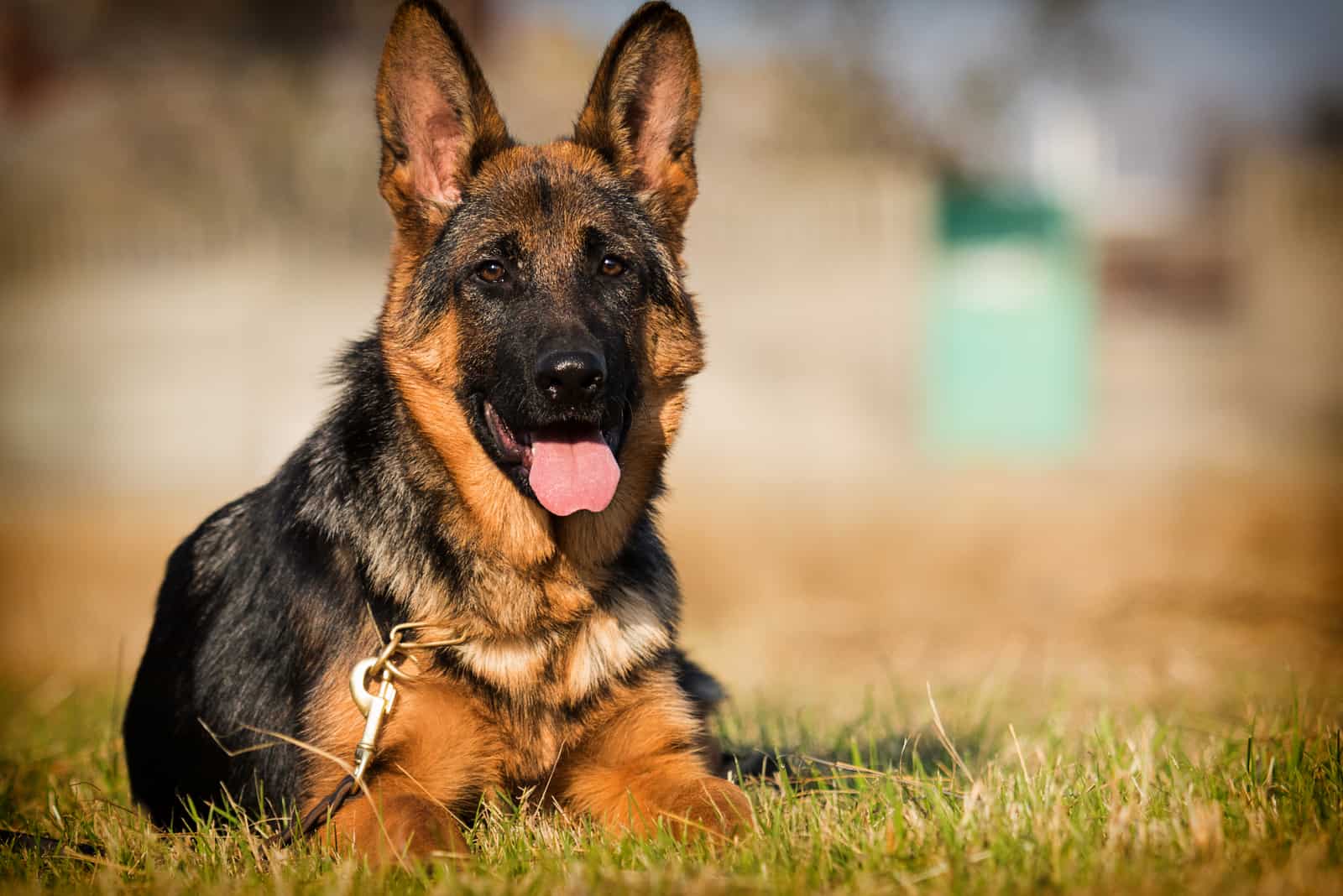German Shepherds (GSDs) are amongst the most popular dog breeds in the US. They are beautiful looking dogs, but also rather intelligent and devoted to their owners.
The breed is also known as one of the bravest, and that’s why they are often used for law enforcement and guarding purposes.
One of the most important decisions a new GSD owner has to make is to choose between a male vs a female German Shepherd.
There’s a big difference between genders within this breed both in their behavior and in their physical characteristics, so it’s important to familiarize yourself with this and with the breed in general before getting a new puppy.
The history of the breed
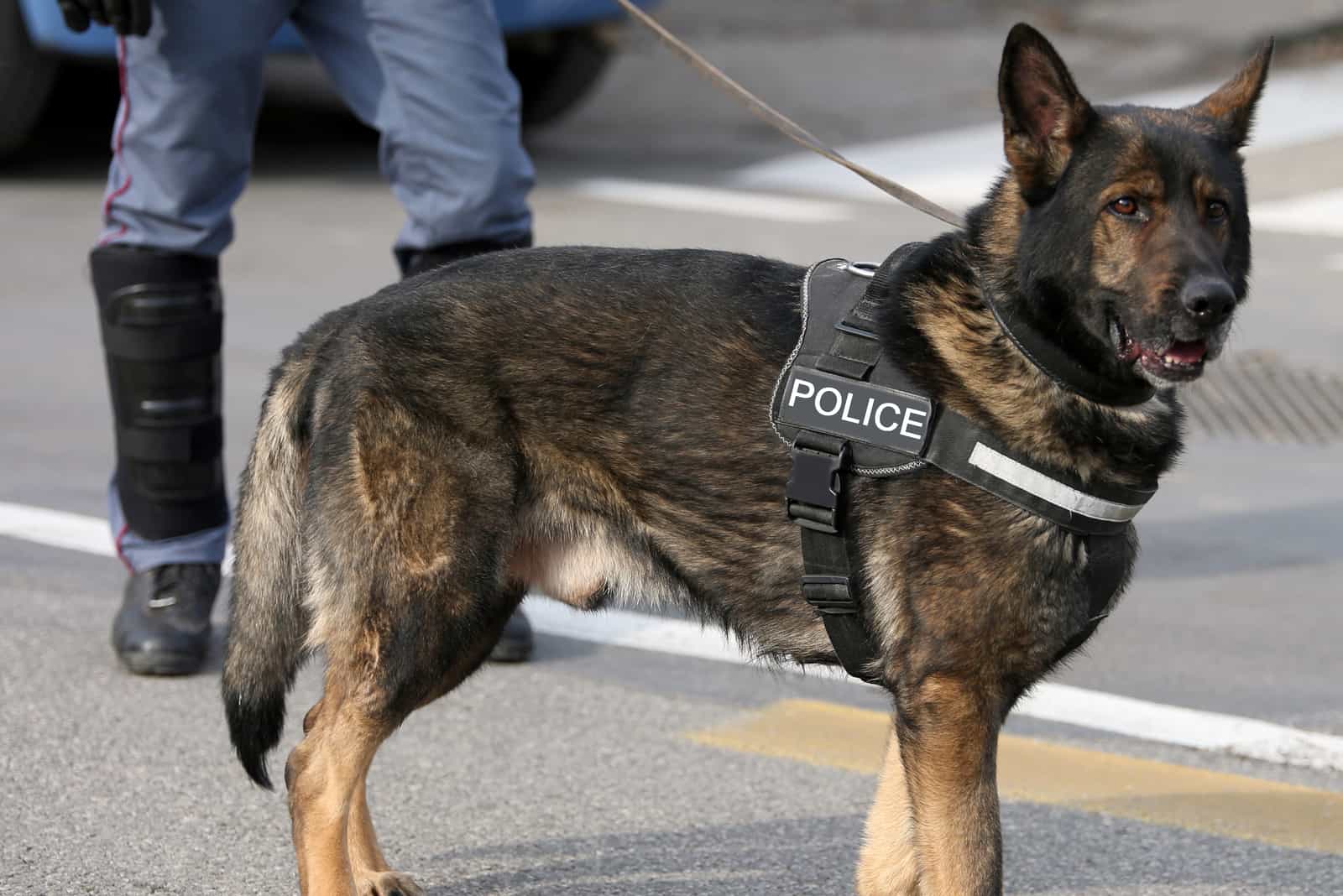
Compared to other breeds, the German Shepherd dog is relatively new. It was bred in 1889 by Captain Max von Stephanitz.
Herding dogs existed centuries before, but German Shepherds had to rally on luck and training alone in order to find the ones that would help them protect their sheep.
After careful breeding, GSDs were made to be intelligent, athletic, and capable of dealing with the daily tasks needed to protect the sheep and obey some rather complicated commands.
That’s why they’ve found their place as police dogs as well as dogs most used for personal protection.
Gender-related qualities are also taken into account when German Shepherds are chosen to be working dogs.
These qualities are also something to consider when adopting one as a family dog. That way, a pet could easily fit in with your family.
Physical characteristics
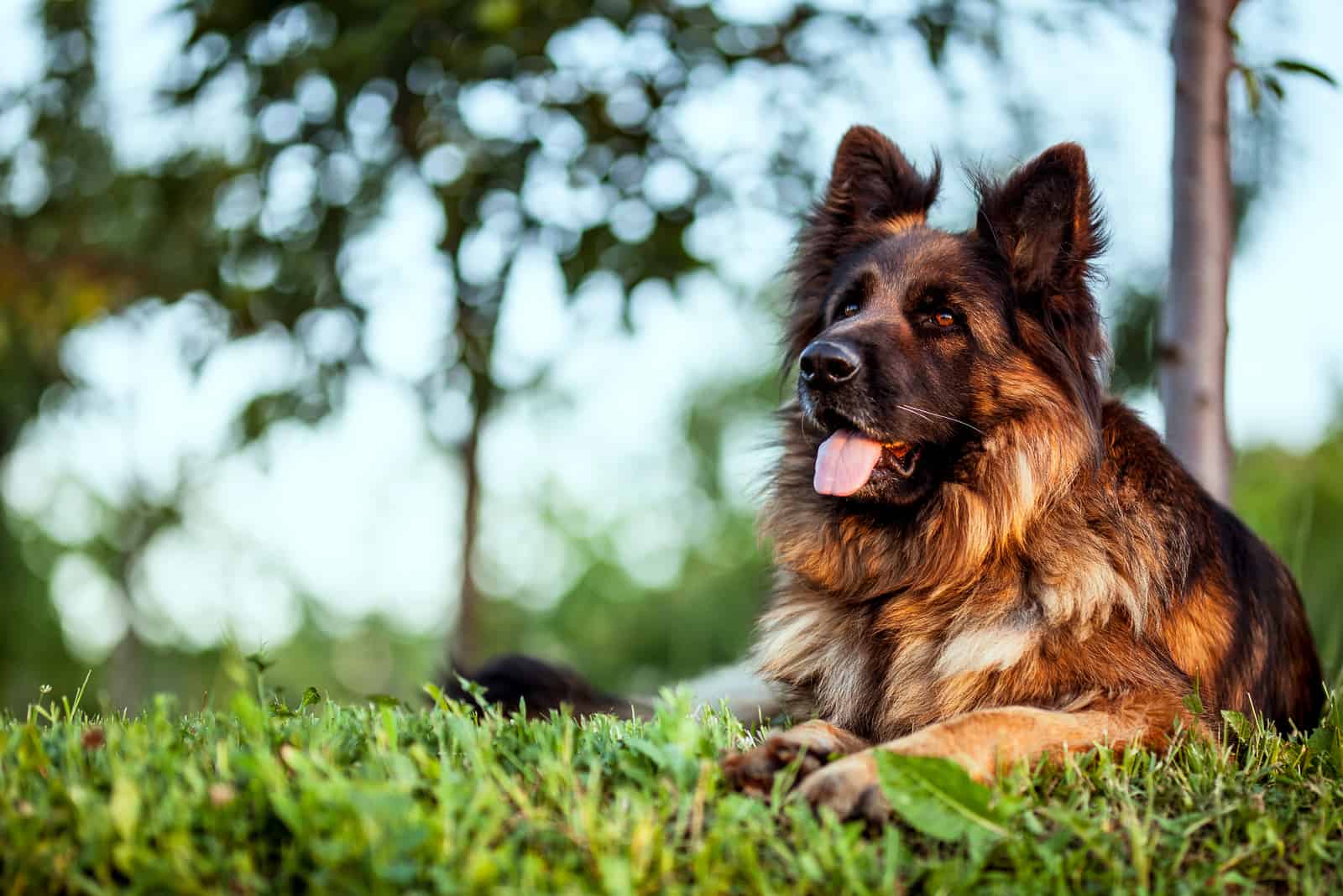
A male German Shepherd is somewhat larger than the female counterpart, and that’s the first consideration to make when purchasing this dog, especially if you live in a small and restricted space.
Male German Shepherds weigh approximately 66 to 88 pounds and grow up to 25 inches.
A female German Shepherd is typically between the weight of 49 and 71 pounds and can grow up to 23 inches. They are also leaner and less stocky in build than the male dogs.
There’s no difference in coat size and fluffiness between the genders, but overall speaking, these dogs come in four different varieties of coat:
• Stock coat
• Plush coat
• Long stock coat
• Long hair coat
The first three varieties have a “double coat”, meaning that they have two layers of coat, with the top layer being denser.
This plays a big role in how GSDs are seen by kennel clubs across the world: under the American Kennel Club, the long hair coat is considered to be a fault, and they are compared separately from the other three varieties.
See Also: Long Haired German Shepherd Vs Short Haired: Which Is Better?
Bringing a dog into your family
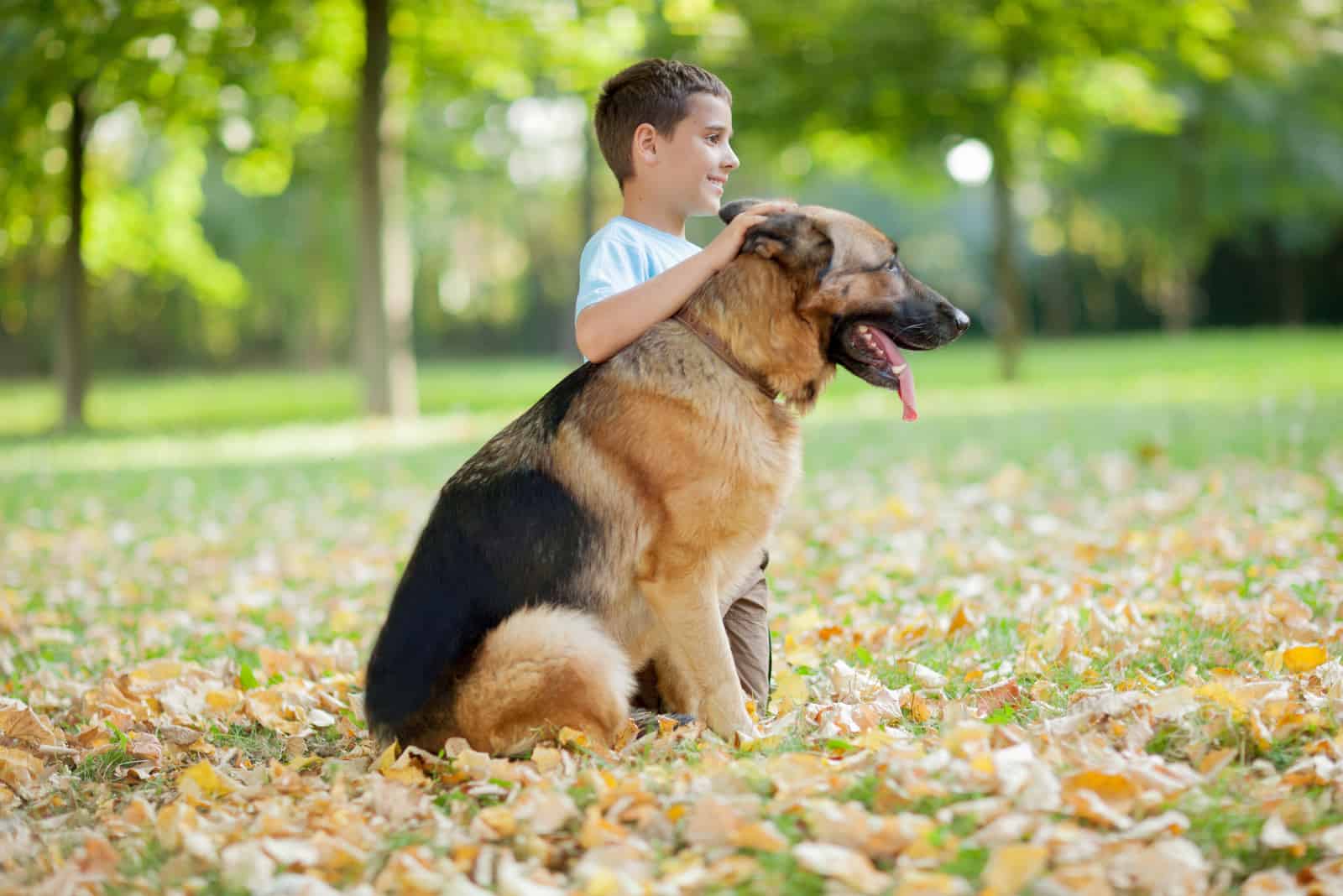
One of the most common concerns a dog owner has is how their new dog will fit in with domestic life, and most importantly, with kids. That’s because some dogs are vicious towards smaller prey, and thus, children.
German Shepherds are simply playful, but unaware of how big and threatening they can be towards kids.
When it comes to getting a GSD for a home with small children, you’ll do well with both genders since they are dogs that can get along with the entire family, especially in terms of safety.
At the same time, you could make this choice based on the type of behavior and personality traits you prefer.
A male dog is more dominant and they like to play rough, but with no intention of harming anyone. Some families, especially those with kids, don’t want that kind of behavior, so they would be better off with female dogs.
A female GSD is prone to bond more closely with the family, and especially the kids. They are more often there for cuddles than for rough play, and they tend to be very protective.
Again, some families find this to be endearing and others may find it a bit cumbersome.
Living with other dogs
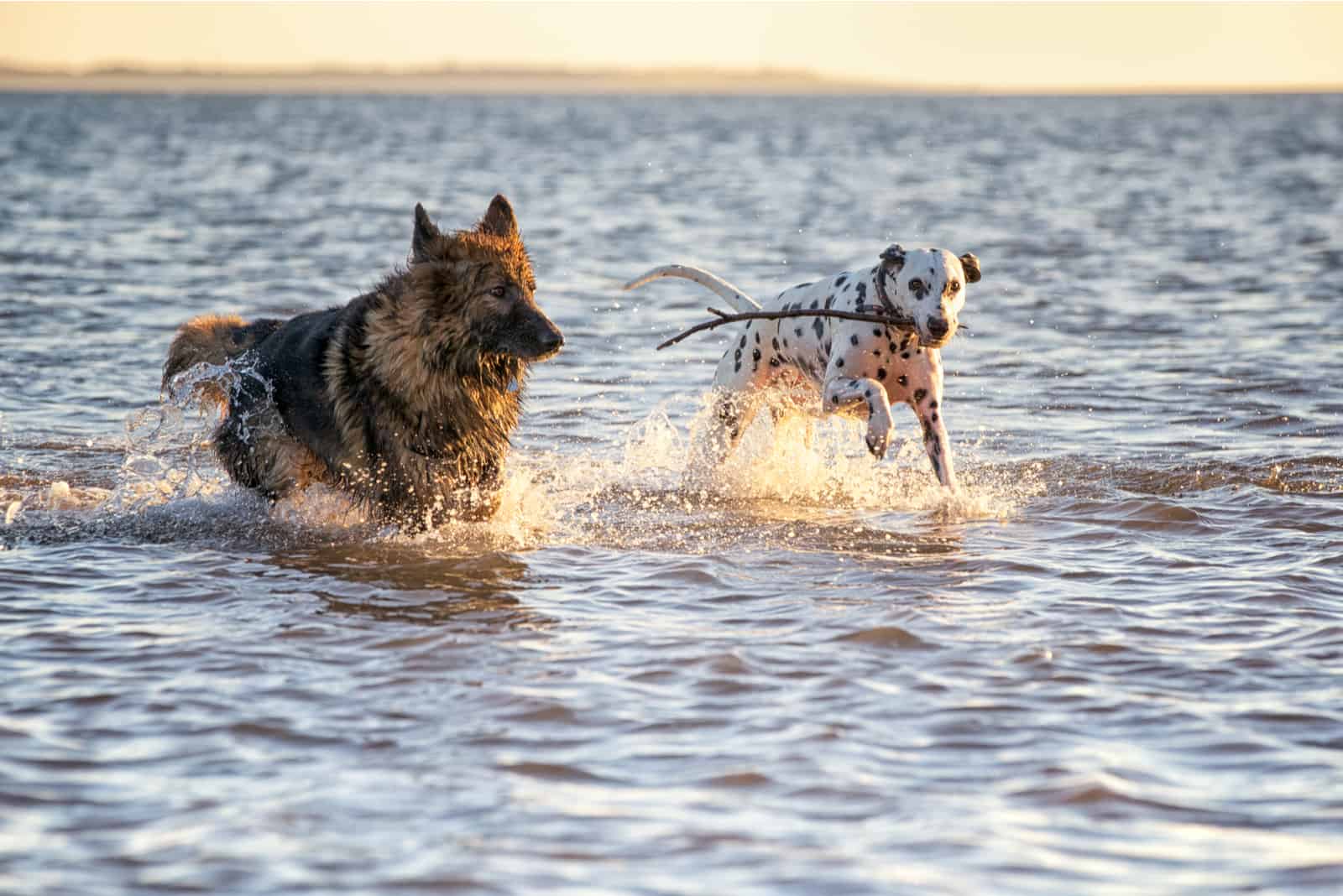
There’s very little difference between the genders of a GSD when it comes to living and getting along with other dogs.
For the most part, they will get along and play along with most other dogs, and there’s no problem with having a German Shepherd along with another pet.
However, there’s one big caveat to this that should be taken into account, and that is that this can only be accomplished through socialization.
That means that a German Shepherd needs to be taught how to get along with other dogs if you want their relationship to be harmonious.
The earlier this is done, the better, and that also means that it’s best to get a German Shepherd as your first pet or to adopt one that you know is used to being around other animals.
There’s also a slight difference in temperament in this regard because female dogs tend to be more protective when a new dog enters what’s considered to be her domain.
Is a male GSD more protective than a female one?
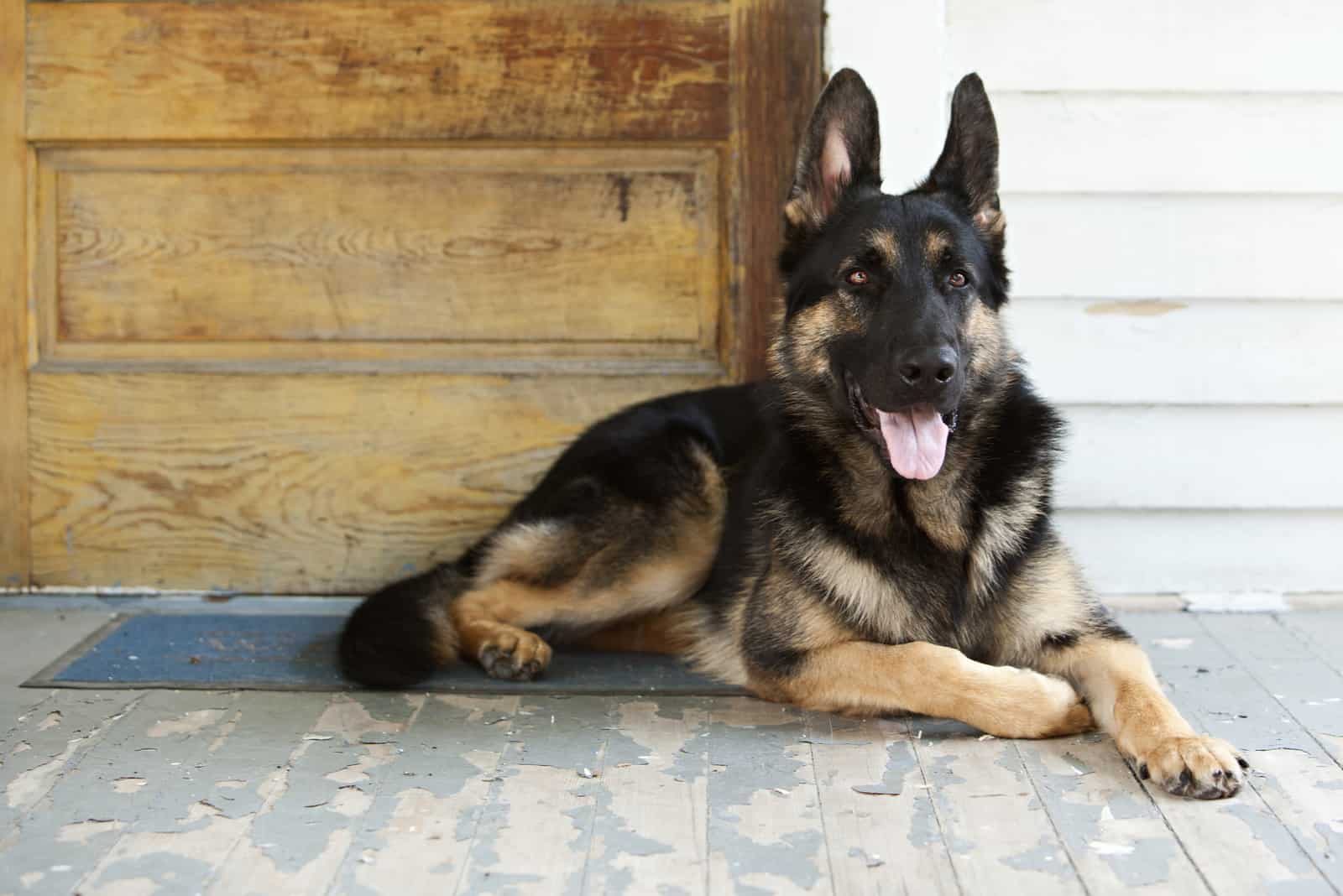
German Shepherds are often used as guard dogs. That’s the case for both female and male dogs, but the manner and the interest of their protection are somewhat different, which is something to take into account when choosing a dog for this purpose.
Male GSDs are protective of their territory. They tend to walk around the perimeter and patrol it for intruders.
It’s also a common sight to see a German Shepherd get alarmed a few moments before someone knocks on your door, especially if it’s someone with whom they are not familiar.
When it comes to female German Shepherd dogs, they tend to be more protective of the family members, especially the kids.
They won’t be alarmed if someone enters the area, but they can become protective if a person is unknown to them.
Both of these behaviors can serve a purpose in terms of protecting your home and your loved ones. It’s up to your personal preference or personal needs to choose between them.
Health problems
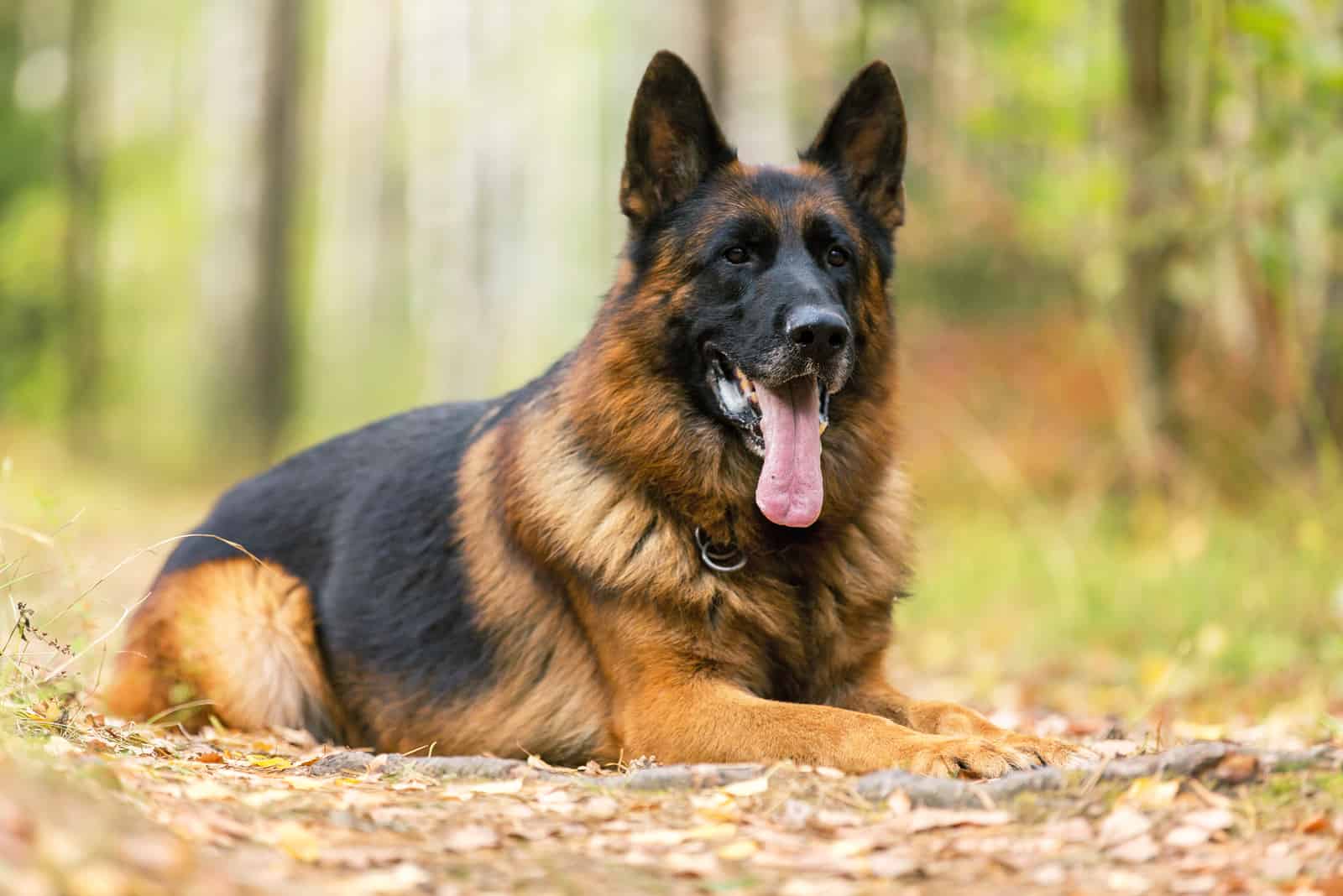
German Shepherds have a variety of common health issues that sometimes come about from a very young age.
That’s why it’s essential for their owners to find a vet and have an insurance policy on their health. These common problems usually appear equally with male and female dogs.
These problems may include:
• Hip Dysplasia – A disease that causes the cartilage in the hip to erode and the ball and the socket of the joint to rub together. It’s rather painful and it limits mobility.
• Elbow dysplasia – This happens when the elbow joints of your GSD don’t grow properly.
• Exocrine Pancreatic Insufficiency – A disease of the digestive system.
• Panosteitis, also known as long bone disease – This affliction usually starts when the dog is 14 months of age and passes on its own.
• Various skin problems usually happen to GDSs with a double coat and present themselves as dry, and therefore, itchy skin.
• Degenerative Myelopathy – A progressive degeneration of the spinal cord, and sometimes even paralysis.
• Epilepsy – A neurological disease that’s hereditary and can only be treated by medication that will ease the symptoms.
• Bloat – A stomach condition causing the dog to produce gas and an enlarged digestive tract. This needs to be treated right away or it can be fatal.
Temperament difference between male and female GSDs

Photo from:@marathondogs1
This isn’t an easy comparison to make since it depends on many other factors besides the gender of your dog.
There are some personality traits that will be more noticeable with female dogs than with male dogs, but that’s not something to take for granted.
Male German Shepherds tend to be rougher and more aggressive than their female counterparts.
They are also more interested in the territory than in those on it, and that’s why some dog lovers prefer the female dogs as companions.
It’s also important to have in mind that this is the case only when you compare two dogs that have a similar socialization level and a similar upbringing.
Dogs that are used to being around people and used to a domesticated environment from a young age are easier to get along with than those that are not, regardless of their gender.
Dogs also have personalities of their own that can’t be completely changed by training or by socialization as is the case with people.
Some are simply more friendly than others and some are more aggressive, and there are instances when nothing can be done about that.
It’s easier on both the Shepherd owners and the pet to be aware of this and to accept it.
Possessiveness over people and items
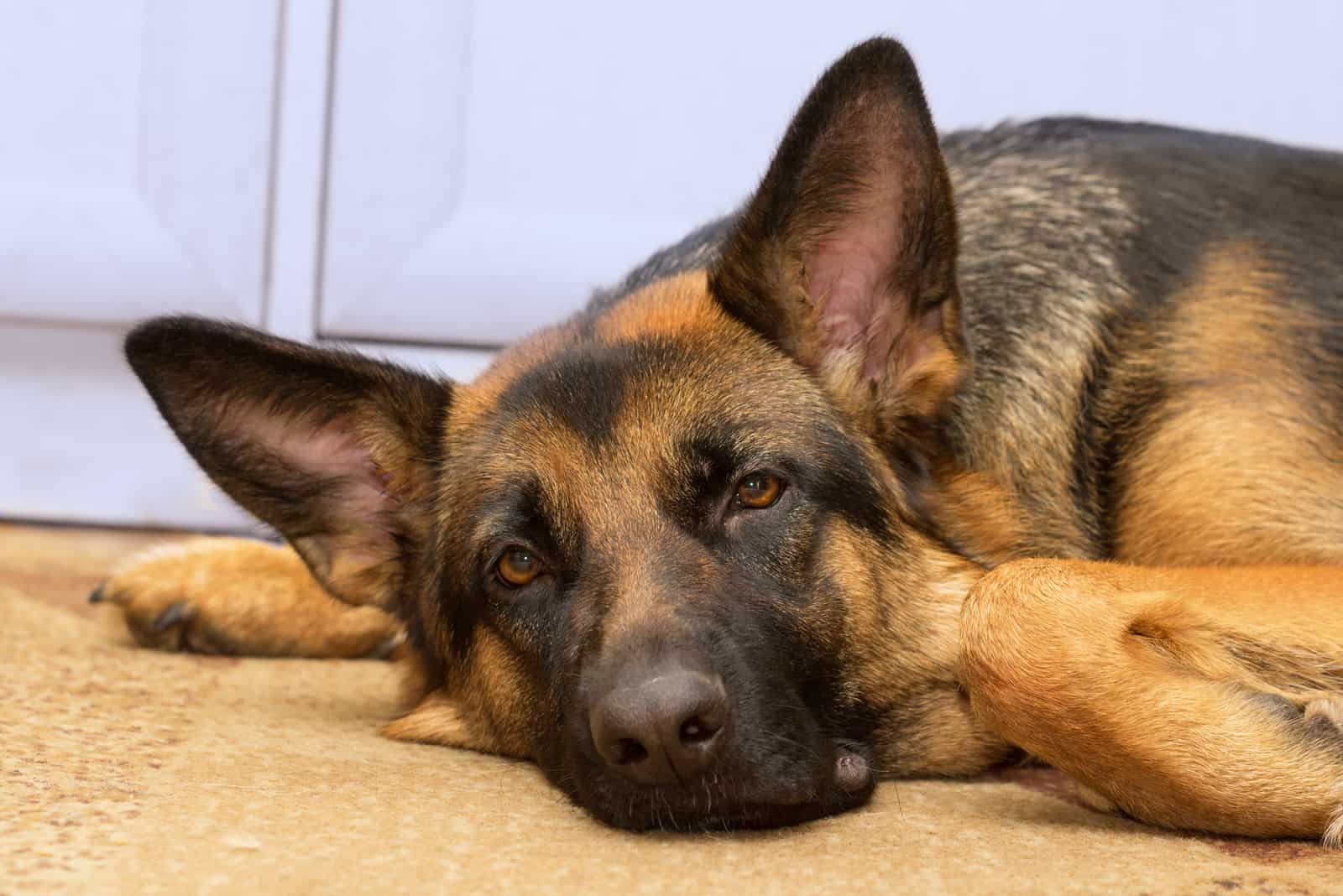
German Shepherds tend to be possessive over both people and items, and this is presented in their behavior and sometimes in their aggressive stance towards outsiders.
Both of these problems or traits (if you want to put it more mildly) are more common with males than with females.
Male GSDs are usually more connected to a single person within a family than to the unit as a whole while females are equally attached to the whole family.
There’s no way to say which person will have that special status for a male dog, but it often happens that it’s a new baby in the home. Once the dog gets to know them, they tend to be fiercely protective of a new baby.
In addition, the dog can be affected seriously when a family member dies. German Shepherds tend to grieve for their owners, particularly those with whom they were most connected.
They can get depressed and it affects their eating habits, mood, and overall personality.
Male dogs are also more possessive of items, and they tend to have a particular toy or a blanket that they consider to be their own.
Sometimes, they are aggressive when someone tries to take the item away from them. This isn’t to say that this doesn’t happen to female dogs, but it’s more noticeable with male ones.
Female GSDs in heat: How do you deal with it?
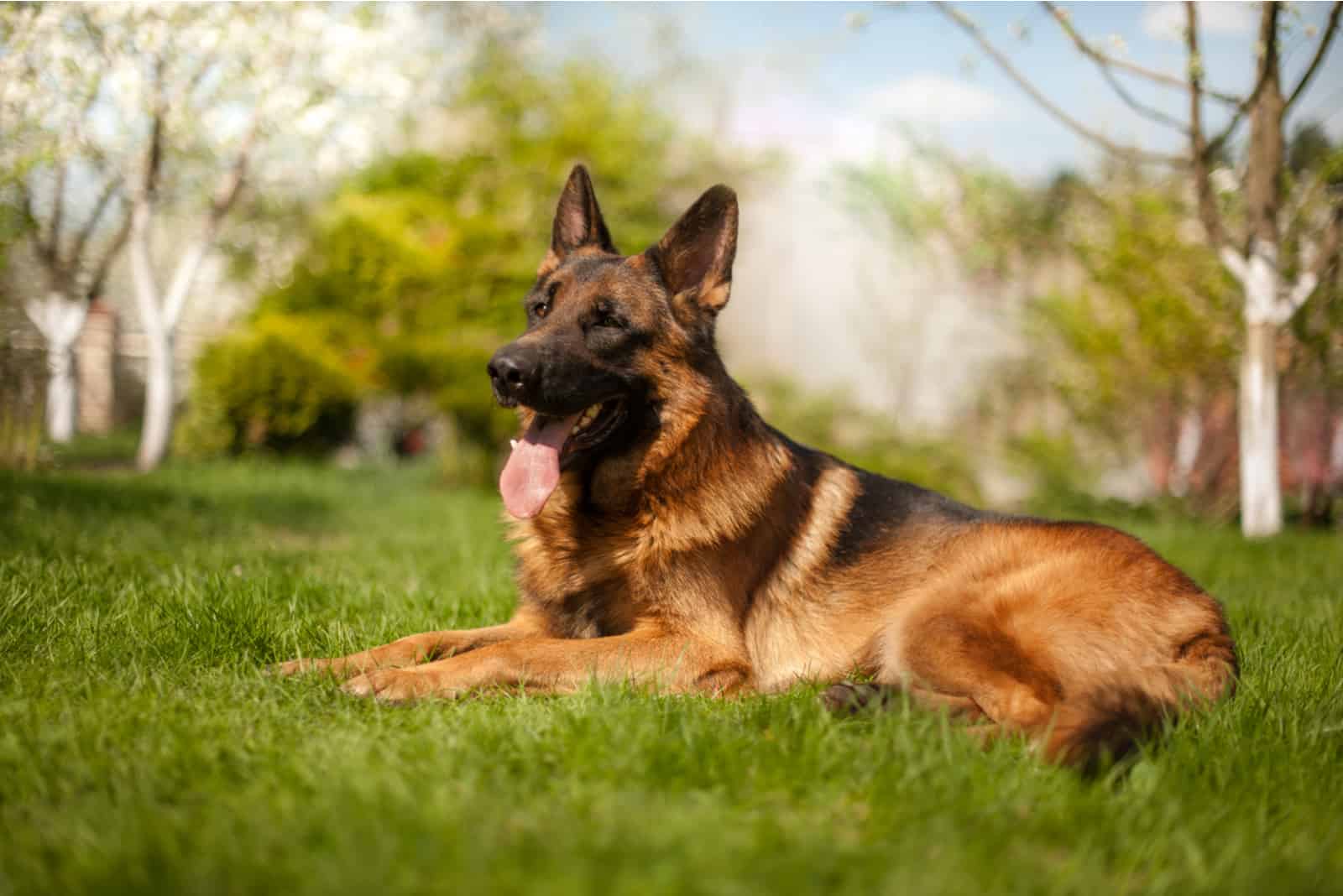
Female GSDs exhibit behavior that’s somewhat different than their male counterparts when they are in heat; that is to say when they are ready to mate and reproduce. More properly, this is also known as in estrus at the least amongst veterinarians.
This only happens to dogs that are intact (the surgical procedure commonly referred to as spaying) and that are at the age when they are sexually mature.
For the most part, this happens between six and 12 months of age. This varies with the particular dog, and it’s best to consult a vet if you’re not sure when this is the case.
The heat cycle lasts about four weeks, and for some dogs, it will happen once a year while for others, it may happen as frequently as every four months. It’s best to assume that your dog will be in heat for at least 21 days.
If you’re planning to breed your dog, the conception is most likely to happen sometime around seven to 14 days after the cycle has started.
It’s essential to confine your dog for the whole time during the heat cycle if you don’t want the dog to mate because if you leave it to run freely during that time, chances are some accidental mating may come to pass.
If you don’t use your dog for breeding, then it’s best if the male dogs undergo neutering since that will make everyone’s life easier, and you won’t have to go through these behavior changes in cycles.
Male dogs also become less violent when they are neutered.
Considering a German Shepherd as your first dog?
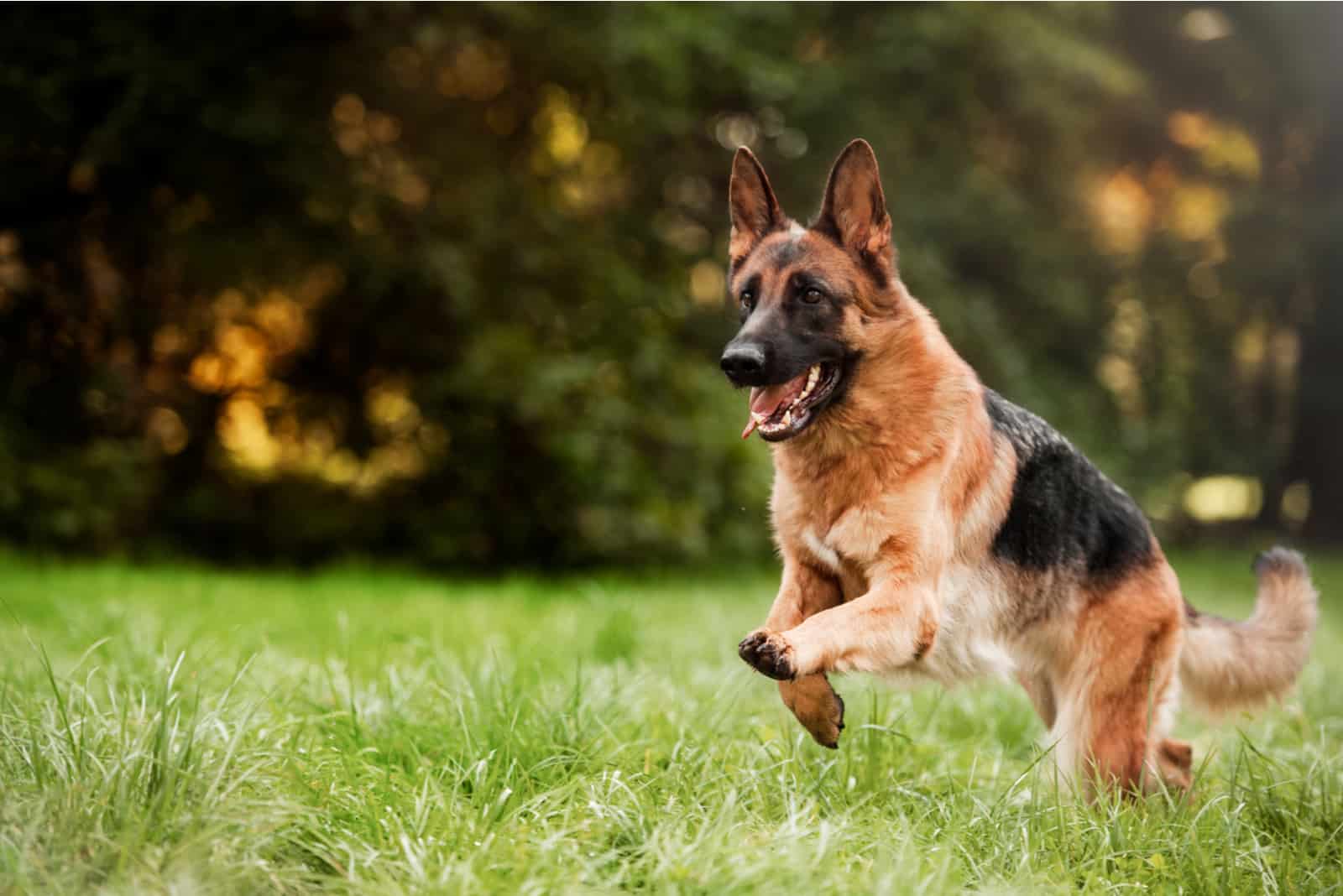
There’s a difference between novice dog owners and those who have had a pet for a while.
Your first dog will be more of a challenge both in terms of the tasks at hand with taking care of it and in terms of how strong and personal the bond between you two will be.
That’s something to take into account when you decide to get this German dog breed.
If it’s your first time getting a dog, then you may want to go with a female GSD due to all the personality traits we’ve mentioned before. It’s also a dog that is easier to train and socialize for a beginner.
This isn’t to say that training and socializing a female dog will be easy. There’s still a lot of work ahead for you if you are new to owning a puppy.
A novice dog owner can train a male dog as well – a GSD is a very intelligent dog, and with the proper work, anything can be done, but it will be more of a challenge.
How do you get one?
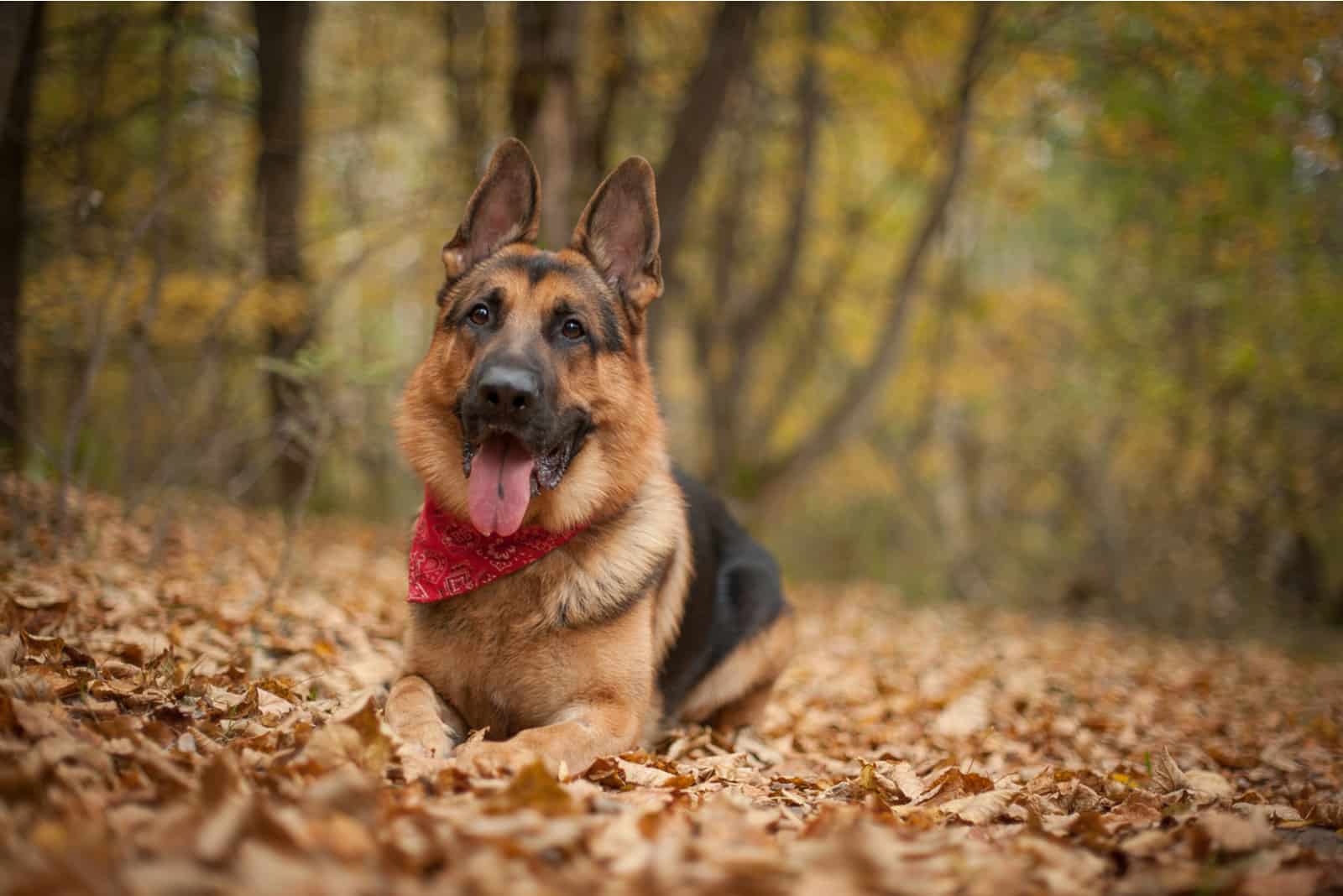
German Shepherds are amongst the most popular dog breeds out there, and getting one shouldn’t be that difficult regardless of where you live and what your preferences are.
This is true for both male and female dogs, and for adults just as it is with puppies.
There are three main options to take into account:
– Breed-specific rescues. These are the organizations that take care of abandoned German Shepherds most likely after they’ve been retired from the working dog role they had.
GSDs are often service dogs for police or for customs, and this is where they go when they can’t perform their duties anymore. It’s a way to make sure that you get a purebred and trained dog, but without having to pay for one.
– Animal shelters. German Shepherds are a very popular breed, and chances are you’ll find one at a shelter.
This means you won’t be able to verify how purebred they are, but if that’s not of concern to you, then it’s probably the best way to get a pet.
– Breeders. In the end, if breeding is important to you and if you’re looking to find specific traits in your new dog, then proper breeding is the best way to go, and it will be the most expensive way since it takes the expertise of a breeder to do it.
Related: The 6 Best German Shepherd Breeders In Maryland You Need To Check Out
Which one should you get?
In the end, there’s no one-size-fits-all answer to this question. There are similarities between male and female GSDs, meaning that it’s not that much of a dilemma, but there are also differences both in terms of needs and care issues as well as in terms of behavior and temperament.
Making a choice on a male vs a female German Shepherd is a matter of personal preference and life circumstances in which you plan to bring the dog into.
Also, have in mind that the dog will grow and change over time, so you need to plan for that in advance.
Read Next: Are German Shepherds Good With Cats? A Guide You Need To Read

